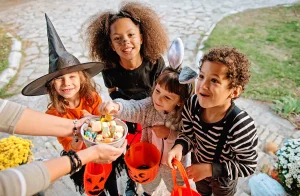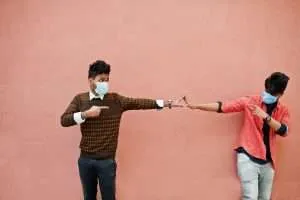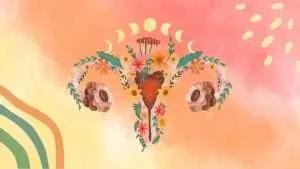Social Science and Halloween
Have you ever considered how students or professionals from different social sciences might assess or analyze Halloween, differently? In this article we will explore social science and Halloween through the perspectives of a sociologist, a psychologist, an anthropologist, a political scientist, a communication expert, and an economist.
The Sociologist’s Perspective on Halloween
Halloween, that annual extravaganza of costumes, candy, and creepiness, is a holiday that has deep sociological implications. Sociologists study how individuals and groups interact within society, and Halloween provides a fascinating lens through which to analyze various aspects of social behavior.
From a sociological standpoint, Halloween serves as a social ritual that reinforces community bonds. The act of trick-or-treating, where children go from door to door collecting candy, is not just about the sweets but also about fostering a sense of belonging and trust within neighborhoods. It’s an opportunity for neighbors to meet, interact, and build connections they might not otherwise have.
Moreover, sociologists observe that Halloween can highlight social inequalities. Not all families can afford elaborate costumes or expensive decorations, which can lead to feelings of exclusion and inferiority, especially among children. Sociologists also investigate the role of gender and cultural identity in costume choices and the perpetuation of stereotypes. However, Halloween can also be a platform for social change, as individuals and groups increasingly use it as an opportunity to raise awareness of social and political issues.
The Psychologist’s Perspective on Halloween
Psychologists delve into the intricacies of the human mind, and Halloween is a rich source of psychological exploration. One fascinating aspect of Halloween is the thrill of being scared. It’s the one time of the year when people actively seek out frightening experiences, from haunted houses to horror movies.
Psychologically, this phenomenon is known as the “safe scare.” It allows individuals to experience fear in a controlled and enjoyable manner, providing a rush of adrenaline and a sense of accomplishment once the ordeal is over. It’s a form of catharsis that helps people cope with stress and anxiety in their everyday lives.
Halloween also showcases the powerful influence of group behavior and conformity. The pressure to dress up and participate in festivities can lead to a conformity effect, as people may feel compelled to join in even if they’re not particularly interested in Halloween. Moreover, the psychology of self-identity and the freedom to be someone else for a night can be liberating, and it’s something psychologists find intriguing.
The Anthropologist’s Perspective on Halloween
For anthropologists, Halloween is a cultural goldmine. This holiday, with its roots in Celtic traditions and its fusion with Christian beliefs, demonstrates how cultures evolve and blend over time. It’s a perfect example of syncretism, the amalgamation of different cultural practices into a new, unique tradition.
Anthropologists also look at the way Halloween reflects a society’s values and taboos. The costumes people choose often reflect their fears, desires, and aspirations. By analyzing these choices, anthropologists can gain insight into the collective psyche of a culture. For instance, popular costume themes may change over time to reflect contemporary issues and concerns.
Furthermore, Halloween offers anthropologists the opportunity to examine the role of rituals in human societies. The act of dressing up, going door to door, and receiving candy carries symbolic meaning, and anthropologists investigate how these rituals connect individuals to their culture and to one another.
The Political Scientist’s Perspective on Halloween
Political scientists are interested in how power dynamics and social structures play out, and Halloween has a political dimension that may not be immediately obvious. For one, it’s a holiday that often reveals political divisions and controversies. Debates over cultural appropriation, political correctness, and the limits of free expression come to the forefront during this time of the year.
Additionally, Halloween provides insight into the political economy. The holiday generates a massive economic impact, from the sale of costumes and candy to the creation of jobs in the entertainment industry. Political scientists might analyze how governments regulate aspects of Halloween, such as safety measures in haunted houses or the enforcement of age restrictions on the purchase of certain costumes.
Furthermore, Halloween can be a platform for political expression. Protest costumes and themed parties have become a way for people to make statements about contemporary politics, social justice issues, and more. For political scientists, Halloween is an opportunity to study how individuals use popular culture to engage with the political discourse.
The Communication Expert’s Perspective on Halloween
Communication experts focus on the ways people convey messages and meaning, and Halloween is all about visual communication. The costumes we choose, the decorations we use, and even the way we interact during Halloween parties all send messages to those around us.
Costumes, in particular, are a form of self-expression. Communication experts analyze how individuals use them to convey their identity, interests, and even their sense of humor. It’s also interesting to study how these visual messages are received and interpreted by others.
Moreover, Halloween fosters community engagement, and the ways people communicate during the holiday can provide valuable insights into group dynamics, storytelling, and the creation of shared narratives. The act of sharing ghost stories, legends, and urban myths is an integral part of Halloween’s culture, which communication experts find intriguing.
The Economist’s Perspective on Halloween
Economists, always concerned with resource allocation and market dynamics, find Halloween a fascinating case study. The holiday represents a significant economic event with multiple sectors benefiting from it.
Halloween is big business. Economists study the supply and demand of costumes, candy, and decorations. They analyze consumer spending patterns, price fluctuations, and how seasonal economic activity impacts different industries.
Economists are also concerned with the cost-benefit analysis of Halloween. They might investigate the economic trade-offs of hosting parties, buying costumes, and decorating homes. For instance, they could assess whether the happiness and social benefits of celebrating Halloween outweigh the monetary costs.
Final Thoughts on Social Science and Halloween
Halloween, with its complex social, psychological, cultural, political, communicative, and economic dimensions, is a holiday ripe for examination by social scientists. It’s more than just costumes and candy; it’s a reflection of our collective psyche, a celebration of our shared culture, and a testament to the power of ritual and tradition.
Halloween offers a unique perspective on the way society functions and evolves, providing valuable insights for multiple fields of study. Whether you’re a sociologist, a psychologist, an anthropologist, a political scientist, a communication expert, or an economist, there’s something in social science and Halloween for everyone to analyze and appreciate.
Additional Social Science and Halloween Content from Applied Worldwide

If you enjoyed this article we have a couple other Halloween analyses at Applied Worldwide. Click any of the links below for more sociology and Halloween content!








